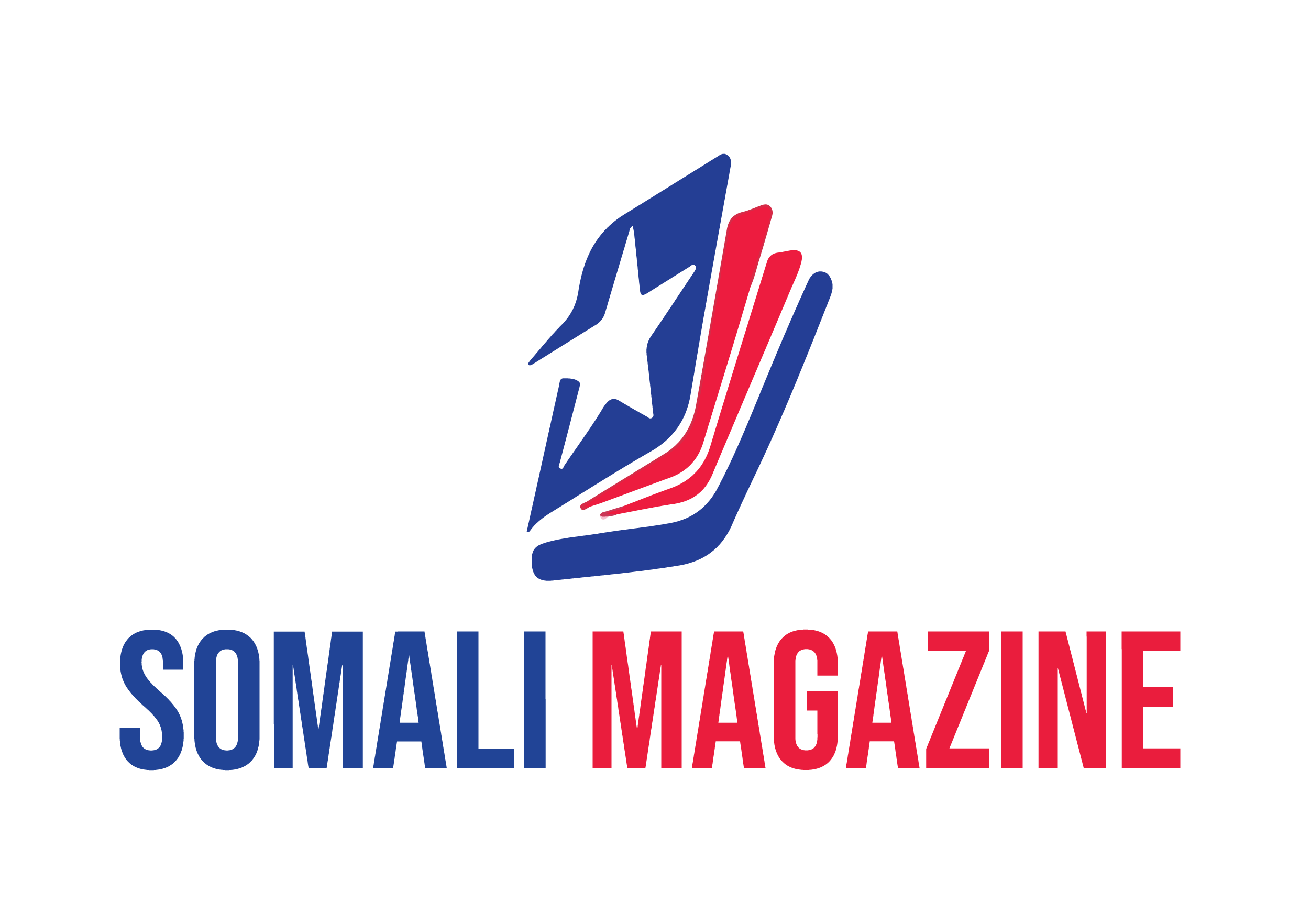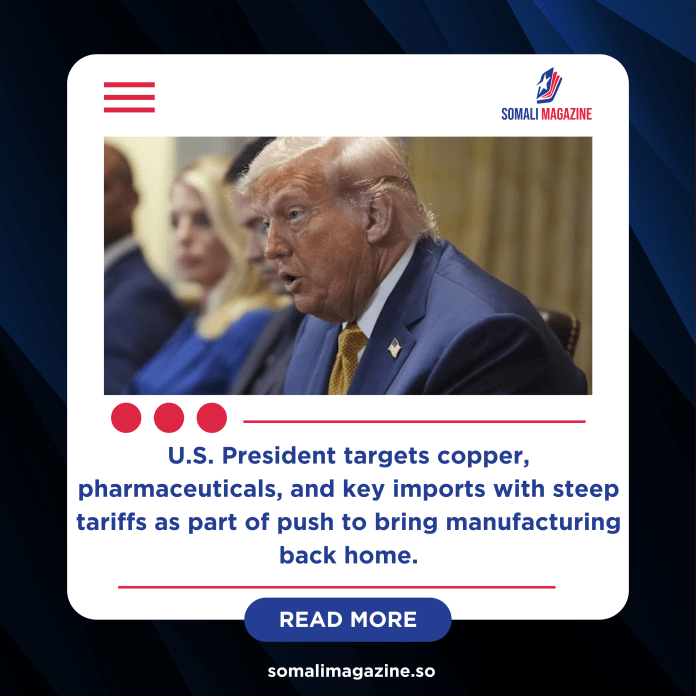Facebook Twitter (X) Instagram Somali Magazine - People's Magazine
U.S. President Donald Trump has announced a new 50 percent tariff on copper imports and confirmed he will not delay a broader set of tariffs due to take effect on August 1. This move is part of his administration’s wider strategy to reduce America’s reliance on foreign goods and bring more manufacturing back to the U.S.
Speaking during a cabinet meeting on Tuesday, Trump said, “Today we’re doing copper,” as he revealed the high tariff rate. The announcement follows a recent investigation into copper imports, which the administration says could be hurting the U.S. industry.
Commerce Secretary Howard Lutnick later confirmed to CNBC that the copper tariff would likely be enforced by the end of July or on August 1. The 50 percent duty is expected to impact a number of foreign suppliers and raise the cost of imported copper in the U.S.
In addition to copper, Trump also hinted at upcoming tariffs on pharmaceutical products. However, he stated that drug manufacturers will be given time—around a year to a year and a half—to shift their operations to the United States. After that grace period, any pharmaceutical products still being imported could face extremely high tariffs, possibly up to 200 percent.
“We’re going to give people time to come in,” Trump said. “After that, they’re going to be tariffed at a very, very high rate.”
This focus on copper and pharmaceuticals is part of a broader push by the Trump administration to protect key U.S. industries. Trump has already ordered investigations into imports of other important products, including lumber, semiconductors, and critical minerals. These investigations could also result in new tariffs in the near future.
According to Secretary Lutnick, the reviews of pharmaceutical and semiconductor imports should be completed by the end of July. Once the reports are ready, President Trump is expected to decide on any new policy measures, including potential tariffs.
This isn’t the first time Trump has used tariffs as a tool to promote U.S. industry. Back in April, his administration introduced a 10 percent tariff on a wide range of imported goods from nearly all major trading partners, including the European Union and Japan. While these tariffs were originally scheduled to rise sharply for many countries, Trump delayed their implementation—first to July 9, and now to August 1.
However, this time he emphasized that there will be no further extensions.
“This is it,” Trump said. “We’re not going to keep delaying. The tariffs will start August 1, and everyone knows that now.”
These moves are part of Trump’s broader strategy to strengthen the U.S. economy and reduce dependence on global supply chains, especially in industries he views as critical to national security and economic stability.
Critics, however, have warned that higher tariffs could lead to increased prices for American consumers and strain relations with key trading partners. Still, the Trump administration remains firm in its approach, arguing that temporary pain is necessary for long-term economic independence.
As the August 1 deadline approaches, many companies—especially those in the metals, pharmaceutical, and tech industries—will be watching closely. Businesses that rely on foreign imports may now face pressure to shift production to the U.S. or pay the price through higher taxes at the border.
With more tariff announcements likely on the horizon, Trump’s economic agenda is set to remain a central focus as he continues his second term in the White House.

